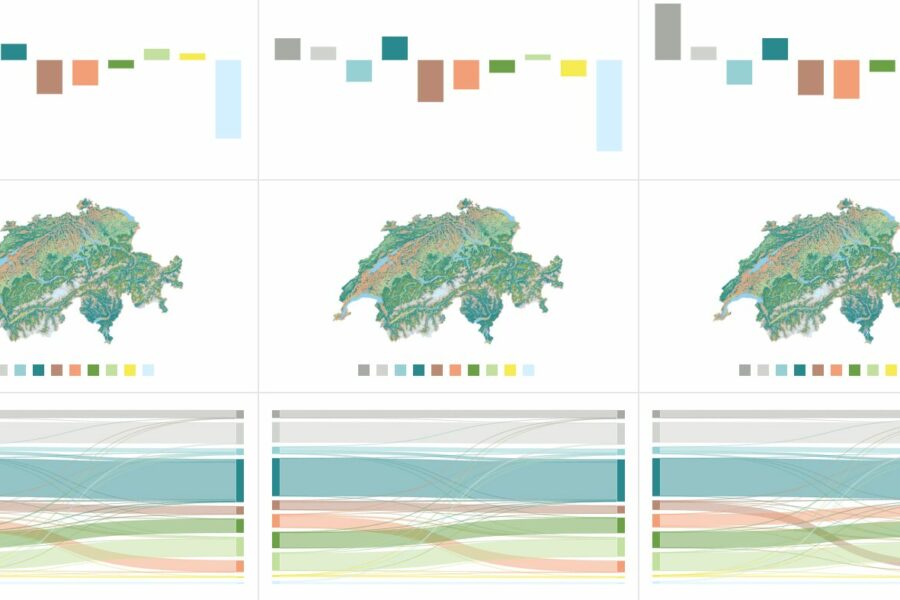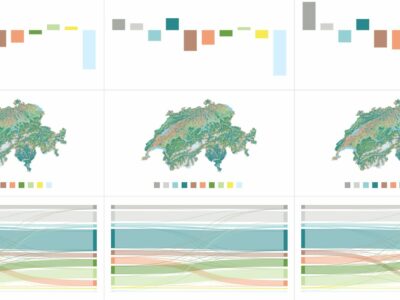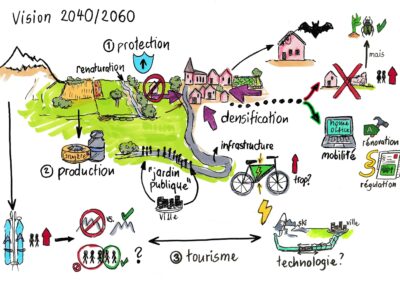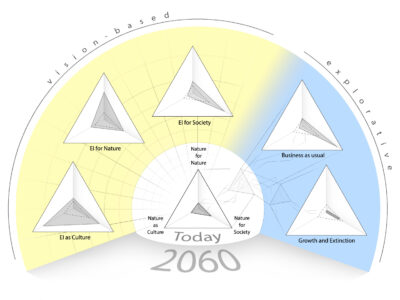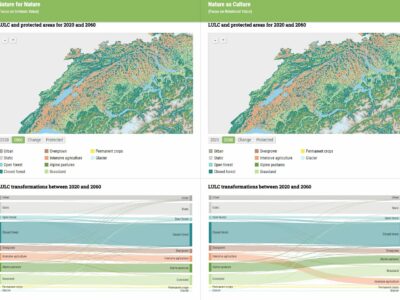The background of this study was the need for scenarios framing the development of a national Ecological Infrastructure (EI) in Switzerland. Swiss cantons were mandated to map and plan future EI within their borders, and the Swiss Federal Office for the Environment (FOEN) had commissioned the interdisciplinary ValPar.CH research project to provide scenarios to support decision making for this task. Our aim was to develop scenarios accounting for different (positive) value perspectives on nature, in order to help identify strategies and management actions to secure a functioning EI in 2060 in Switzerland. Further, the scenarios were developed as an input to a modeling pipeline for simulating future land use, biodiversity, and Nature’s contributions to People (NCPs) in Switzerland in 2060 under various scenarios, which may assist in prioritizing areas for planning EI.
Through a participatory process involving stakeholders and experts, we co-designed five integrated, multi-scale scenarios framing the development of Ecological Infrastructure (EI) until 2060 in Switzerland. We developed three normative scenarios (EI for nature, EI for society, EI as culture) that aim at encapsulating desirable visions for the landscape and the EI by the year 2060, alongside two exploratory scenarios tracking current trends (Business as usual) and hindering trends for EI (Growth and extinction), respectively.
In a second phase, we operationalized these scenarios into quantitative inputs for a land use-land cover (LULC) change model using a combination of existing projections of future drivers (e.g. the Swiss population and economic growth scenarios, as well as climate change predictions) as well as routines to affect changes in spatial trends based on the scenario assumptions.
The results of the study (scenario narratives and operationalized scenarios in the land use model) can be used for cantonal planning of ecological infrastructure. The study design can be applied to other cases, currently to Peru.
The scenarios were made in: 2023
The scenarios look out to: 2060
